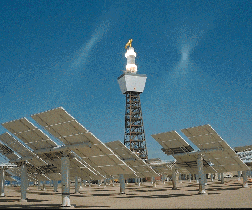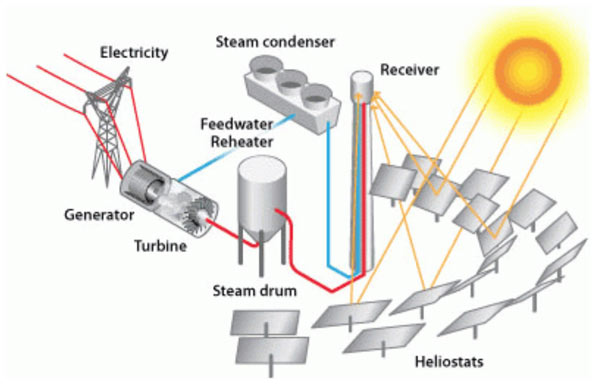power (solar) tower

Power tower system. Image courtesy of SunLabs, DOE.

Main components of a power tower system.
A power tower, also known as a central receiver solar power plant, is a type of concentrating collector system that employs a field of large, flat mirrors that follow the Sun's path across the sky. The mirrors concentrate sunlight onto a receiver on top of a high tower. A computer keeps the mirrors aligned so the reflected rays of the Sun are always aimed at the receiver, where temperatures well above 1000°C can be reached.
A heat-transfer fluid heated in the receiver is used to heat a working fluid, which, in turn, is used in a conventional turbine generator to produce electricity. Some power towers use water/steam as the heat-transfer fluid. Other advanced designs are experimenting with high temperature molten salts or sand-like particles to maximize the power cycle temperature.
The Ivanpah Solar Electric Generating System is the largest concentrated solar thermal plant in the US. Located in California's Mojave Desert, the plant is capable of producing 392 megawatts of electricity using 173,500 heliostats, each with two mirrors that focus sunlight onto three solar power towers.
Aside from the US, Spain has several power tower systems. Planta Solar 10 and Planta Solar 20 are water/steam systems with capacities of 11 and 20 megawatts, respectively. Gemasolar, previously known as Solar Tres, produces nearly 20 megawatts of electricity and utilizes molten-salt thermal storage.
